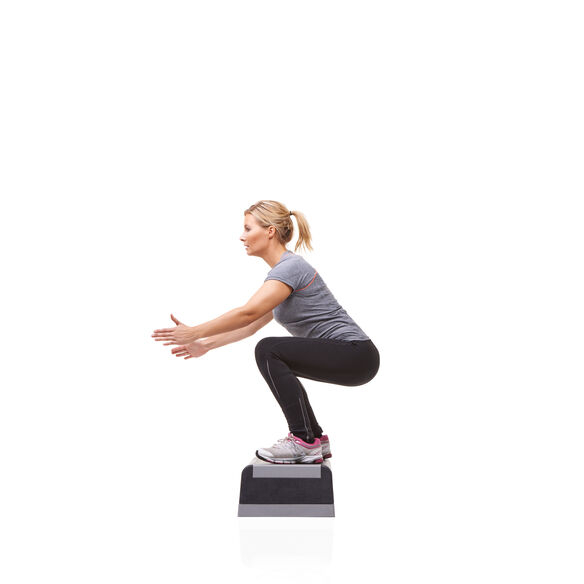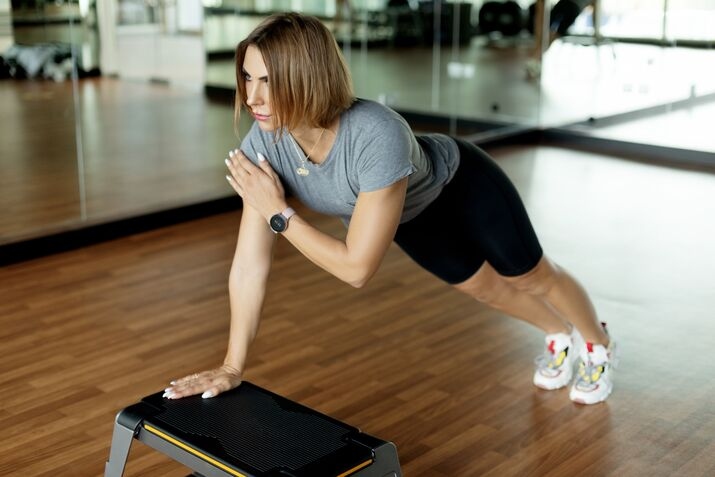15 Effective Slant Board Exercises You Can Do
Slant boards are a fun way to do your workout whether at home or at the gym. Exercises with slants boards are usually beneficial in terms of strength, balance and stability. And to think there are a variety of exercises you can do with a slant board. In case you didn’t know, i;m glad you’re finding out here first.
In this blog post, we will be having a look at 15 effective slant board exercises you can do. Let’s get into it, shall we?
What Is a Slant Board?
A slant board is like a small ramp made from wood or sturdy material. Because it is tilted, it helps you do exercises that stretch and work your muscles in different ways. You can use it for stretching your calves, working your legs, or even improving your balance. It is a great tool for people of all ages who want to get stronger and more flexible.
Why Use a Slant Board?
Incorporating slant board exercises into your workout routine comes with many benefits, let’s find out some of them below;
- Improves Flexibility: The tilt helps stretch your muscles, especially in your legs.
- Builds Strength: It provides resistance that makes your muscles work harder.
- Enhances Balance: Working on a tilted surface challenges your balance.
- Prevents Injuries: Strengthening muscles with controlled movements can protect your joints.
- Variety: It makes your workout more fun, yet provides you with the full benefits.
1. Calf Stretch
This simple exercise helps stretch the muscles in your lower legs.
- How to Do It:
Stand on the slant board with your feet shoulder-width apart. Keep your knees straight, lean forward slowly, and feel the stretch in your calves. Hold for 15 to 30 seconds, then relax. - Why It Works:
It gently stretches the calf muscles, making them more flexible and less prone to injury.
2. Bent-Leg Calf Stretch
This stretch targets the soleus muscle, which is lower in your calf.
- How to Do It:
Stand on the board and slightly bend the knee of the leg you want to stretch. Keep the heel on the board and lean forward until you feel a stretch lower in the calf. Hold for 20 seconds and switch sides. - Benefits:
It helps improve flexibility and reduces muscle tightness in the lower part of your calf.
3. Deep Squat

Deep squats on a slant board challenge your leg muscles and improve balance.
- How to Do It:
Stand on the slant board with your feet hip-width apart. Lower your body into a deep squat, keeping your heels firmly on the board. Slowly push back up to the starting position. - Repetitions:
Do 10 to 12 squats. - Why It’s Effective:
It strengthens your quadriceps, glutes, and improves overall leg power.
4. Slant Board Step Down
This exercise works your legs by mimicking a stepping motion.
- How to Do It:
Stand on the slant board with one foot on the board and the other on the ground. Slowly lower your body by bending the knee of the foot on the board while keeping your back straight. Then, push back up and switch feet. - Repetitions:
Aim for 10 to 12 reps on each side. - Benefits:
It helps improve balance and strengthens your quadriceps.
5. Slant Board Patrick Step
The Patrick Step is a variation of the step down that targets your leg muscles even more.
- How to Do It:
Stand with both feet on the slant board. Step one foot off and slowly lower your body, bending the knee of the foot still on the board. Return to the starting position and repeat, then switch sides. - Repetitions:
Perform 10 to 12 reps on each side. - Why It Helps:
This exercise builds strength in your legs and improves balance.
6. Slant Board ATG Squats
ATG squats (Ass to Grass squats) help you achieve a deep squat position, which builds strength and flexibility.
- How to Do It:
Stand on the slant board with your feet shoulder-width apart. Lower your body as far as you can, keeping your back straight. Hold the bottom position for a few seconds, then stand back up slowly. - Repetitions:
Do 10 to 12 squats. - Key Benefit:
This exercise increases the strength and flexibility of your legs and hips.
7. Slant Board Soleus Stretch
This exercise focuses on your the muscles on your lower calf (soleus)
- How to Do It:
Place the slant board against a wall at a 45-degree angle. Stand with your feet on the board, keeping your heels on the ground. Lean forward until you feel a stretch in your lower calf. Hold for 30 seconds. - Repetitions:
Repeat 3 to 5 times for each leg. - Why It’s Important:
It helps prevent muscle tightness and injury.
8. Slant Board Calf Raise
Calf raises on a slant board make your calves work harder.
- How to Do It:
Stand on the board with the balls of your feet, letting your heels hang off the edge. Slowly raise your heels as high as possible, then lower them back down. - Repetitions:
Do 10 to 15 repetitions per set, and complete 2 to 3 sets. - Benefits:
This exercise builds strong, powerful calves.
9. Slant Board RDL (Romanian Deadlift)
Romanian deadlifts on a slant board work your hamstrings and lower back.
- How to Do It:
Stand on the slant board with your feet shoulder-width apart, holding a dumbbell in each hand. Hinge at your hips, lowering your torso toward the board while keeping your knees slightly bent. Pause at the bottom, then lift back up slowly. - Repetitions:
Do 10 to 12 reps. - Key Benefit:
It improves strength in your hamstrings and lower back, which is important for overall leg stability.
10. Push-Ups on a Slant Board

Push-ups on a slant board challenge your upper body in a new way.
- How to Do It:
Place your hands on the slant board, keeping your body straight. Lower yourself slowly by bending your arms, then push back up. - Repetitions:
Aim for 10 to 15 push-ups. - Why It Works:
This exercise helps build strength in your chest, arms, and core while adding an extra challenge with the inclined surface.
11. Squats on a Decline
Squats on a decline slant board can help you work your leg muscles more deeply.
- How to Do It:
Stand on the slant board with your feet together. Lower your body into a squat, keeping your weight on your heels. Slowly stand back up. - Repetitions:
Do 10 to 15 squats per set. - Benefits:
This exercise activates your quadriceps and glutes while also improving knee alignment.
12. Core-Engaging Leg Lifts
This exercise strengthens your lower abdominals and improves balance.
- How to Do It:
Sit on the edge of a sturdy chair and place your feet on the slant board. Lift one leg at a time, focusing on engaging your core. Keep your movements slow and controlled. - Repetitions:
Do 10 to 12 leg lifts per side. - Key Benefit:
It helps build core strength while also working your leg muscles.
13. Lunges on a Slant Board
Lunges on a slant board add a new challenge to a classic exercise.
- How to Do It:
Place one foot on the slant board and step back with the other foot. Lower your body into a lunge by bending both knees. Then push back up to the starting position. - Repetitions:
Do 10 lunges on each side. - Benefits:
This exercise strengthens your quadriceps, hamstrings, and glutes, while also improving balance.
14. Single Leg Squat
Single leg squats are great for improving balance and building strength in each leg.
- How to Do It:
Stand on the slant board with one foot, and stretch the other leg out in front of you. Slowly bend your knee and lower your body into a squat on the standing leg, then slowly rise back up. - Repetitions:
Do 10 to 12 squats per leg. - Why It Helps:
It builds strength and endurance in your thighs and lower legs.
15. Full-Body Dynamic Circuit
Combine several of the exercises into a fun, dynamic circuit. This helps boost endurance and overall strength.
- How to Do It:
Create a circuit with a mix of 3 to 5 different exercises (like squats, lunges, calf raises, and push-ups). Do each exercise for one minute, then move on to the next. - Duration:
Aim for a total circuit time of 5 to 10 minutes. - Benefits:
This approach challenges different muscles and helps improve your overall fitness.
To Wrap It Up
Slant board exercises offer a unique way to challenge your muscles and improve your strength, balance, and flexibility. With these 15 effective exercises to choose from, you can mix and match to create a workout routine that fits your goals and strength level.
If you need support or guidance in getting the best out of your slant board workout, there are coaches on standby on Sportconn willing to help you.
Sportconn is a sports social platform that promotes connection and bolster relationships amongst athletes, gym enthusiasts, coaches, and other sports professionals.
Everyone is signing up, don’t miss out. Join us now.
